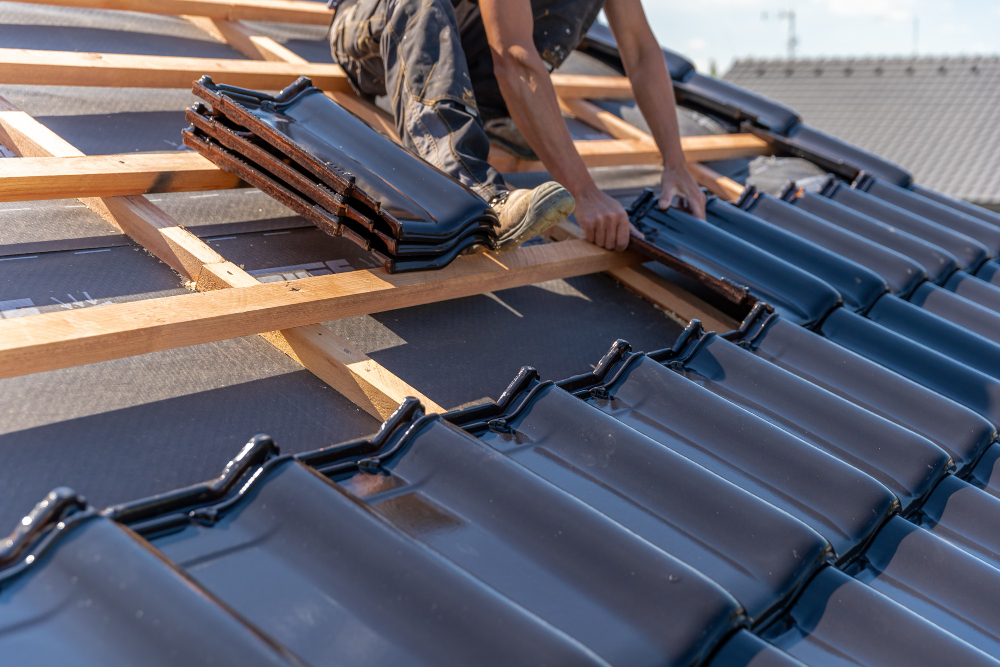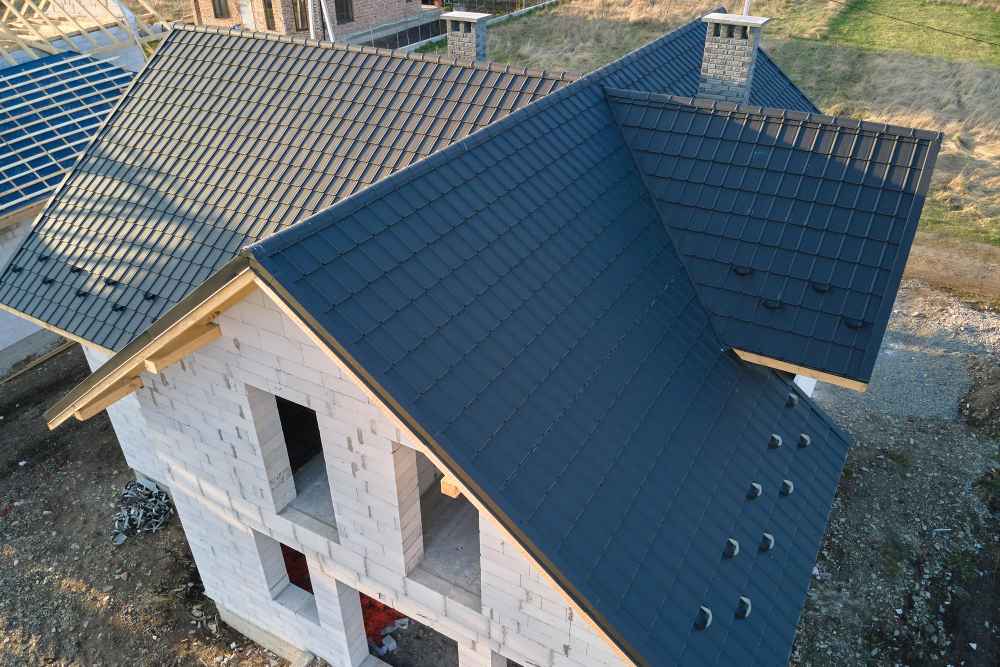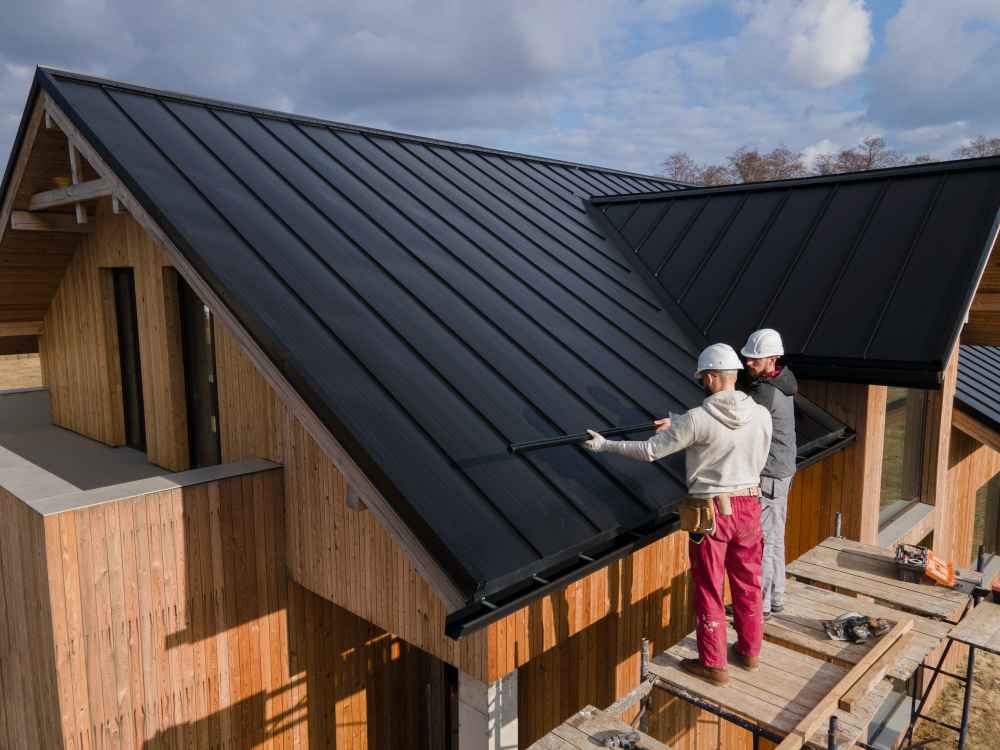Your roof quietly protects everything beneath it, from framing and insulation to furnishings and family. Over the years, sun, wind, rain, and temperature swings wear away at even the best roofing systems.
Small repairs can stretch a roof’s life, but there comes a point where patching is throwing good money after bad. Knowing when you have reached that point prevents expensive interior damage and endless repair cycles.
This guide explains the clearest warning signs of a failing roof, how to confirm what you are seeing, and smart next steps so you can plan a replacement on your terms.
14 Signs You Need a New Roof
Exterior Red Flags
1) Age plus weather history
Roofs do not fail only because they are old. They fail because years of weather finally add up. An asphalt shingle roof that has seen two decades of summer heat, winter freezes, and a few windstorms is living on borrowed time. Tile, metal, and slate last longer, but they age too.
Quick Check: Compare your roof’s install year with typical lifespans for the material in your climate. If you do not know the date, ask your municipality for permits or a roofer for an age estimate.
2) Shingle fatigue: curling, cracking, blistering, or nail pops
When shingles lose flexibility they curl at the edges, split through the middle, or develop blisters from trapped moisture. Nail heads that push up through the shingle surface create tiny water pathways. Any of these show that weatherproofing is breaking down across the surface, not only in one spot.
Quick Check: Stand back and scan for uneven texture or ripples. Up close, look for raised nail heads, brittle edges, and blisters that crush to grit when pressed.
3) Widespread granule loss and bald areas
The mineral granules on asphalt shingles protect against UV damage. When they wash into gutters or leave bald circles on the shingles, the asphalt underneath ages very fast. That accelerates cracking and leaks.
Quick Check: After rain, peek into your gutters and downspout splash blocks. Heavy deposits of sand-like grit point to advanced wear.
4) Flashing fatigue around chimneys, walls, and skylights
Flashing is the thin metal that keeps joints watertight. Wind, thermal movement, and dried sealant can open hairline gaps you cannot see from the street. Once water gets behind flashing, repairs become frequent and frustrating.
Quick Check: Look for rust staining, lifted edges, missing counter-flashing, or hardened sealant that has pulled away from brick or siding.

5) Sagging planes or a wavy roofline
Decking that has absorbed moisture loses stiffness and begins to dip between rafters. A wavy ridge or soft, bouncy feel underfoot means the problem may be structural, not just cosmetic.
Quick Check: Sight along the ridge and eaves from the ground. Any noticeable dip or sway deserves an immediate professional evaluation.
6) Valley and ridge problems
Valleys concentrate water flow, and ridges take the brunt of wind. Missing valley shingles, exposed underlayment, cracked ridge caps, or open seams are common leak sources that often signal system-wide aging.
Quick Check: Use binoculars to scan valleys for shiny underlayment or gaps and the ridge for cracked or missing caps.
7) Persistent moss or thick algae mats
A little discoloration is mostly cosmetic, but mats of moss hold moisture against the roof and pry up shingle edges. Over time that moisture works its way into the deck.
Quick Check: If growth returns quickly after cleaning, you likely have a ventilation or drainage issue and may be past the point where cleaning alone helps.
8) Patchwork repairs all over the roof
A roof that needs frequent spot fixes is telling you something. When repairs start showing up in many areas, the base materials are nearing the end of service life.
Quick Check: Count the patches, tarred spots, and mismatched shingles. If they are scattered across multiple slopes, start planning a replacement.
Attic and Interior Clues
9) Stains, damp insulation, or a musty smell
Water marks on ceilings and walls are the obvious sign. In the attic, look for darkened sheathing, compressed insulation, and that familiar musty odor that signals ongoing moisture.
Quick Check: Inspect the attic after a steady rain. Follow stains uphill to find the entry point rather than the drip location.
10) Daylight or soft spots in the deck
If you can see pinholes of sunlight or feel spongy decking underfoot, water has already compromised the wood. The risk of sudden leaks goes up quickly from here.
Quick Check: Turn off attic lights during the day and look for light leaks near vents, valleys, and penetrations.
11) Poor ventilation and ice-dam history
In cold regions, warm attic air melts rooftop snow. Water refreezes at the cold eave, building an ice dam that forces meltwater under shingles. Recurrent ice dams indicate ventilation or insulation problems and often leave hidden damage.
Quick Check: If you have long icicles or repeated winter leaks, pair a roof assessment with a ventilation review before choosing materials.

Performance and Cost Signals
12) Rising energy bills
A tired roof system struggles to shed heat in summer and retain it in winter. Air leaks, flattened insulation, and heat-soaked shingles can drive utility costs higher.
Quick Check: Compare year-over-year bills for the same months. If usage is steady but costs keep climbing, the roof and attic may be part of the problem.
13) Storm damage that is widespread
A few lifted shingles can be repaired. Wind-creased shingles over whole slopes, hail bruising across the field, or multiple leaks after one storm often push a roof past practical repair.
Quick Check: After major weather, document everything with photos and ask a licensed roofer for a written condition report.
14) Nearing warranty end or resale plans
If your roof is near the end of its warranty and you intend to sell in the next few years, a proactive replacement can prevent last-minute negotiations and bolster curb appeal.
Quick Check: Review your warranty terms and real estate timeline. Sometimes replacing sooner saves money and stress later.
What to Do Next
- Get a professional inspection: Ask for photos, measurements, and a clear summary of remaining life.
- Compare repair vs replacement: If repairs exceed a meaningful percentage of a new roof, replacement is usually smarter.
- Choose the right system: Consider impact resistance, energy efficiency, and ventilation upgrades during replacement to avoid repeat problems.
- Plan timing and budget: Off-season scheduling and bundled attic upgrades can improve pricing and performance.
Conclusion
Roofs rarely fail all at once. They leave a trail of clues: aging shingles, tired flashing, waves in the deck, attic odors, and stubborn energy bills. When several of these show up together, replacement becomes the safer and more economical choice. By watching for the signs, verifying them with simple checks, and consulting a reputable roofer, you can plan a new roof that protects your home for decades.


